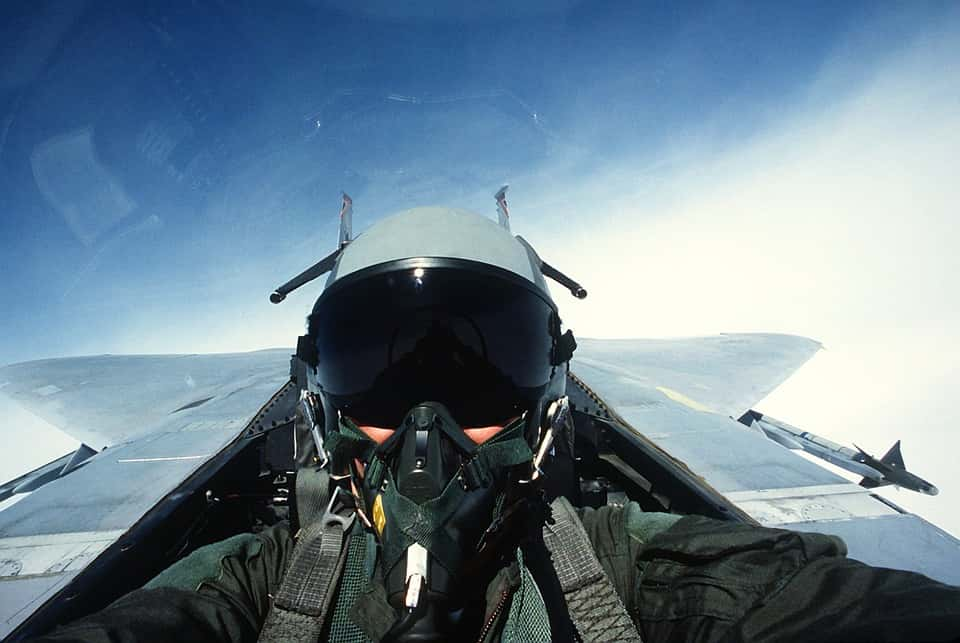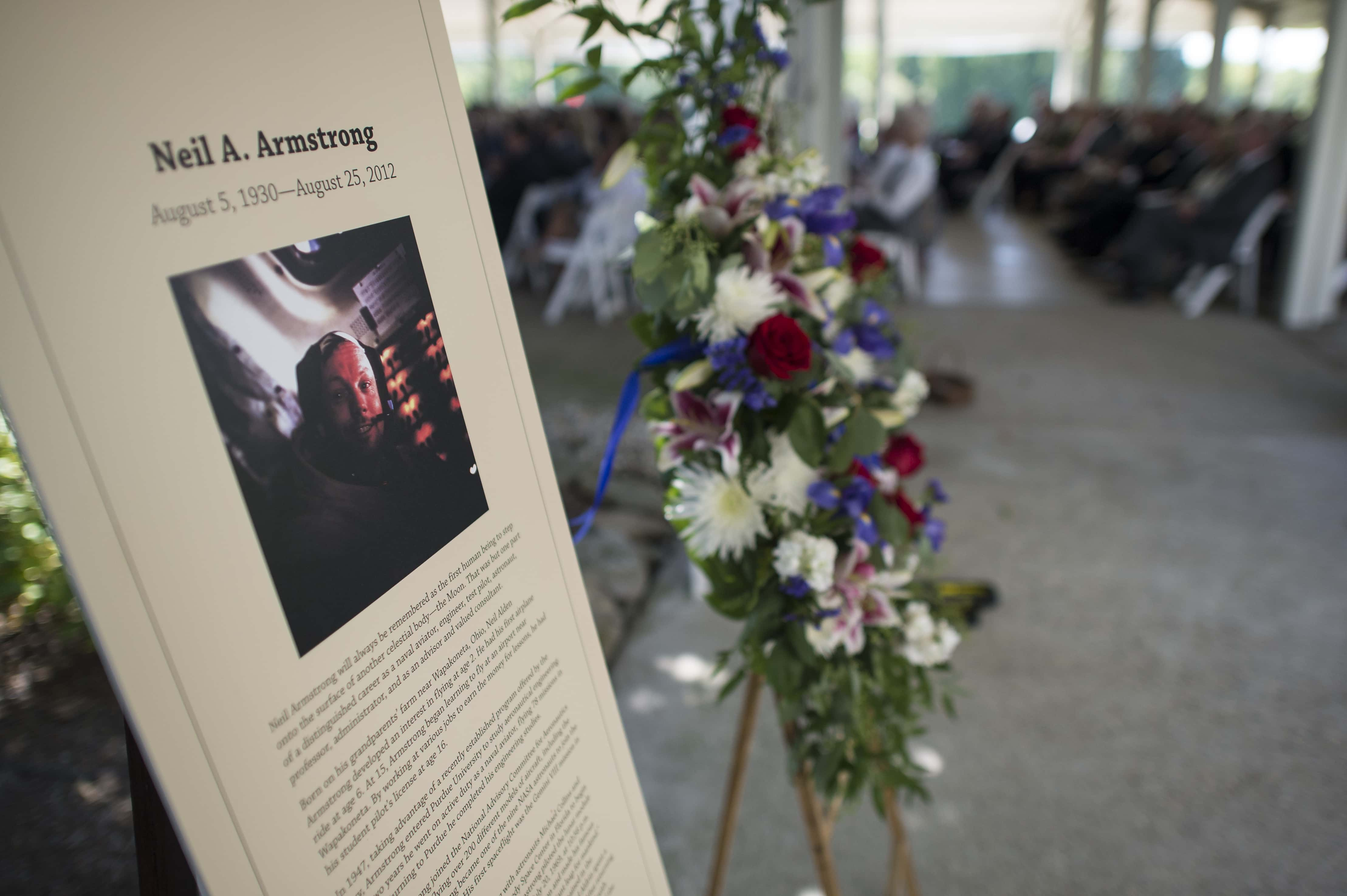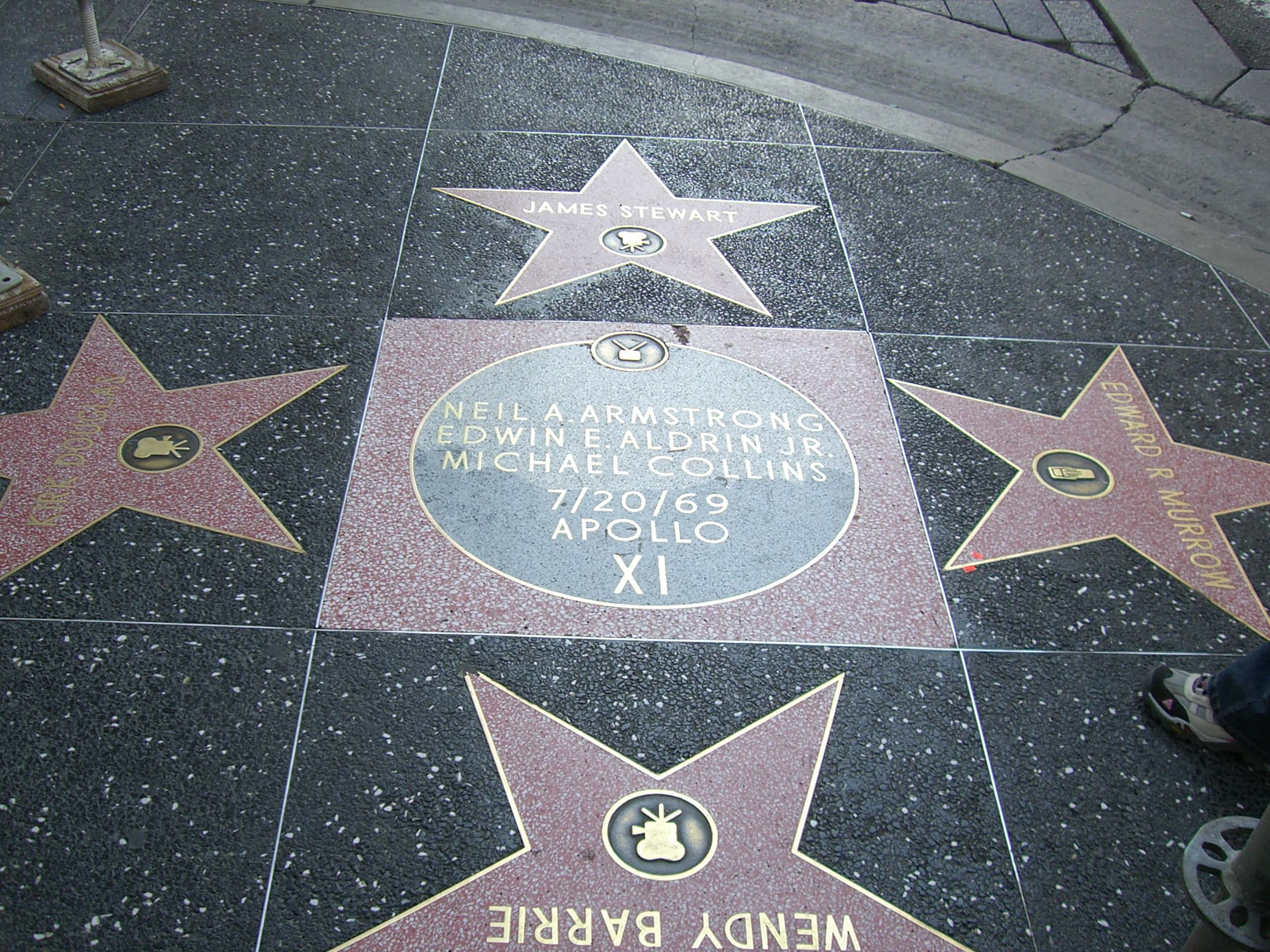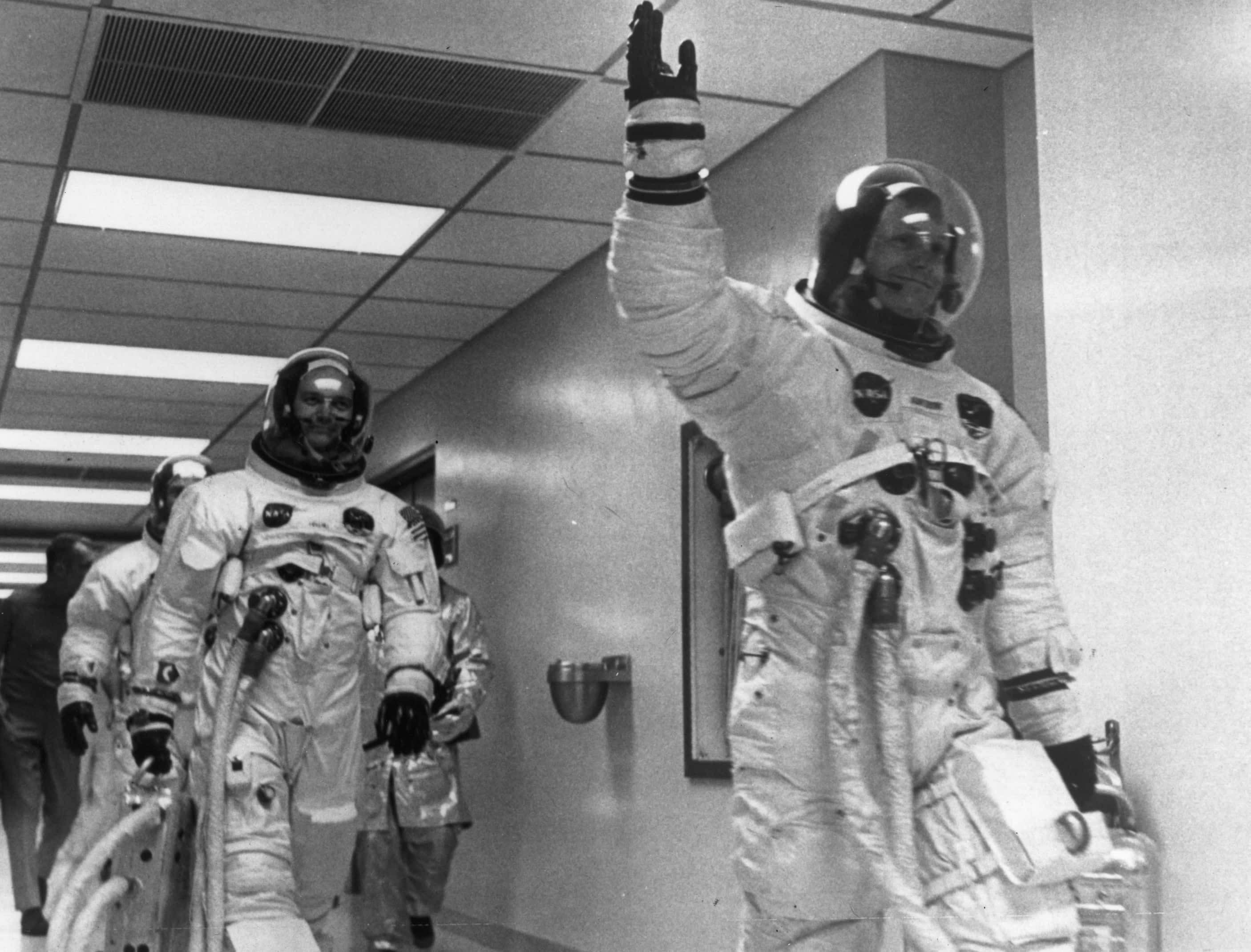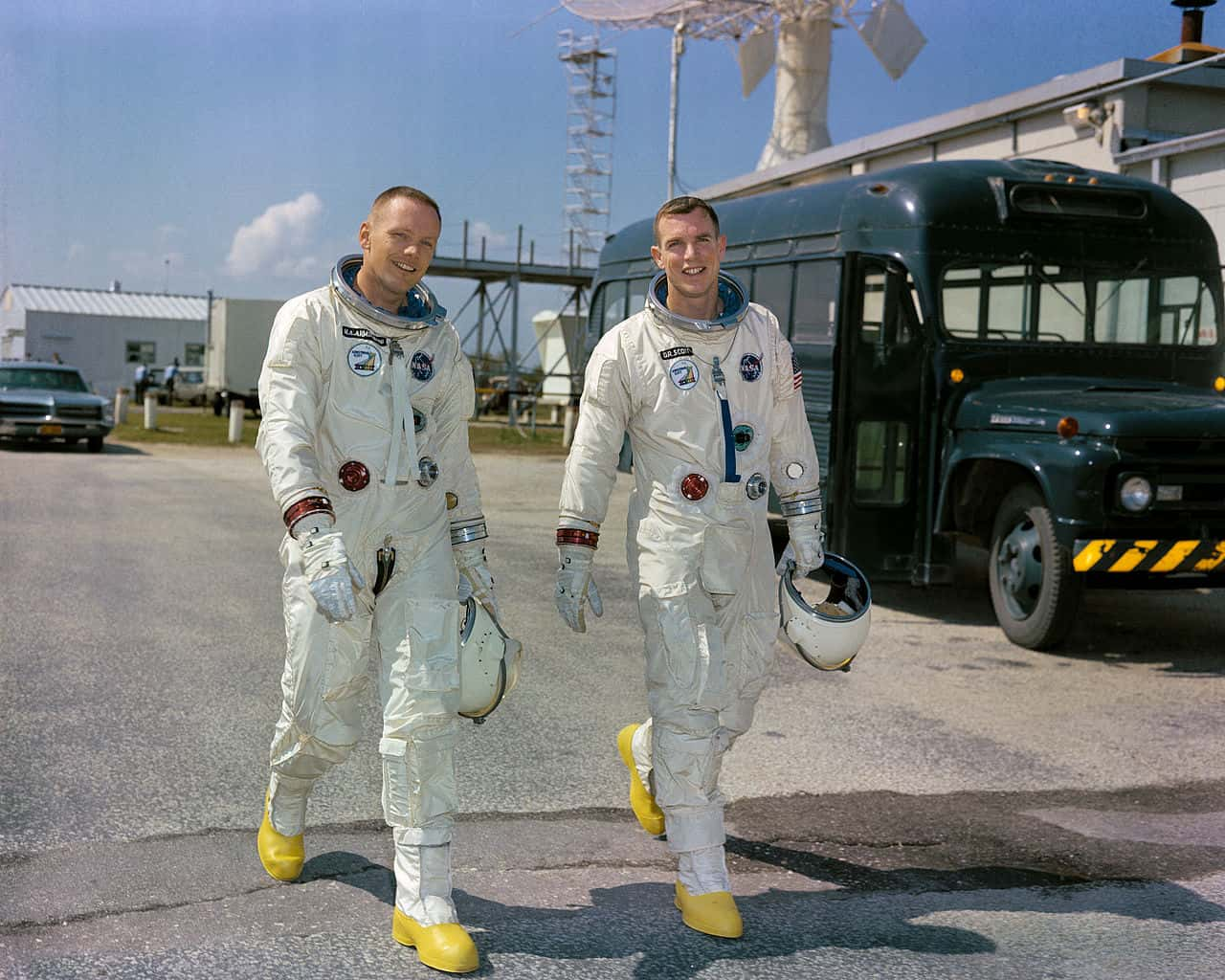“Mystery creates wonder and wonder is the basis of man’s desire to understand".—Neil Armstrong.
Neil Armstrong may be best known—and in some case, only known—for being the first person to step foot on the moon, and rightfully so, considering it was a huge moment not only for the United States, but the entire world. Hence the “giant leap for mankind” line. However, because of this, people tend to think Armstrong was a one trick pony, but that couldn’t be further from the truth. Armstrong accomplished an incredible amount in his life. He could’ve stopped after the moon landing, but he didn’t, so continue reading to find out why Armstrong was such an impressive man—a true hero who didn’t wear a cape but did wear a spacesuit.
1. It’s a Bird, It’s a Plane, It’s Neil Armstrong!
Neil Armstrong took to flying at a young age—his father took him on a ride in a Ford Trimotor airplane when he was six years old—and that passion never went away. By the time he turned 16, he had already spent enough time in the air to get his pilot’s license. He may be the first—and probably only—person ever to get his pilot’s license before his driver’s license.

2. Save That Money
Growing up, Armstrong worked several jobs to try and earn enough money for flying lessons, which back then cost a whopping $9 per hour! One of the jobs consisted of mowing an entire cemetery in Wapakoneta, Ohio—where he grew up—for $1.
3. Life on the Line
Armstrong was a naval aviator from 1949 to 1952, and fought in the Korean War as a fighter pilot. During that time, he flew 78 combat missions.
4. Beginning and End
Armstrong was born in Wapakoneta, Ohio on August 5, 1930—the oldest of three siblings—and passed away on August 25, 2012, in Cincinnati, Ohio, at the age of 82, due to complications resulting from cardiovascular procedures.
5. On His Own Terms
Armstrong was a sought-after man when he returned home from the Apollo 11 mission, but he rarely participated in anything public unless it was under his terms, and he turned down numerous appearances and interviews.
He reportedly would turn away an average of ten requests a month for interviews and even respectively declined a parade held in his honor from his hometown.
If he agreed to speak at events, it was never as the keynote speaker and only if the other members of the Apollo 11 mission were there.
6. Everyone on Earth
It is estimated that over 500 million people watched Armstrong on television step foot on the moon, and several million more listened to it on the radio.
7. One More Thing
Even after being released from quarantine, Armstrong didn’t get to go home and relax with his family, as the Apollo crew had to go on a world tour that consisted of 28 cities in 25 countries in 38 days, and meet with important figures like the Queen of England, the Pope, and the Emperor of Japan.
8. Those Who Can’t Do, Teach
Armstrong retired from NASA in 1971 and decided to put space travel behind him and share his knowledge with the public by teaching engineering at the University of Cincinnati for eight years. He gave an Irish goodbye when he stepped away from that job, though, as he quit in the middle of the school year.
9. Money Isn’t Everything
Armstrong got into a legal battle with Hallmark in 1994 when the company decided to use his name and likeness for a Christmas ornament, but never thought to get his permission first. They went to court and eventually settled, but Armstrong showed later on that it was about the principle and not the money when he donated all of it to Purdue University. Umm, what about a little scratch for the University of Cinncinnati after you left them high and dry, Neil?
10. Side Projects
Armstrong appeared in a commercial for Chrysler that aired during the Super Bowl in 1979, which, at the time, was considered uncharacteristic for the astronaut. Although he more than likely earned a large paycheck, he claimed the main reason he appeared in the ad was that “he wanted the struggling US car maker to improve their sales and continue contributing to the domestic economy".
He would go on to endorse General Time and the Bankers Association of America, and provide engineering advice for companies like Learjet and United Airlines.
11. Going Through Changes
Armstrong worked for NASA before it was even called NASA. When he first joined the organization in 1955, it went by the name National Advisory Committee for Aeronautics, or NACA for short. He spent 17 years at NACA/NASA and had several roles such as engineer, test pilot, astronaut, and administrator.
12. On to the Next One
Being a test pilot for NASA meant Armstrong got to fly and test out well over 200 different types of aircraft, like jets, rockets, and helicopters, and most notably got to be the guinea pilot for 400 MPH X-15 high-speed aircraft.
13. Praying on the Moon
There was a rumor that Armstrong converted to Islam after he heard the call to prayer in the Middle East and claimed he heard the same sound while on the moon. Even though Armstrong denied it, many people of the Muslim faith kept the rumor alive, even after his death.
14. He’s a Know It All
Armstrong has several honorary doctorates from different universities, but his biggest academic achievements came from his time at Purdue University and the University of Southern California, where he earned a Bachelor of Science Degree in Aeronautical Engineering and a Master of Science in Aerospace Engineering, respectively.
15. All Around the World
Armstrong lived a long and decorated life, and his achievements and accomplishments were not only acknowledged by the United States but 17 other countries that honored him with several awards and medals. He was given the Presidential Medal of Freedom, the Congressional Gold Medal, the Congressional Space Medal of Honor, and the American Astronautical Society Flight Achievement Award, to name a few.
16. Country Folk
In 1971, to get away from the public and media, Armstrong and his wife moved back to Ohio and purchased a 200-acre dairy farm for $225,000.
17. Top of the World
In 1985, Armstrong went to the North Pole with a group of fellow explorers who were also known for being the first to accomplish a feat, like fly a balloon around the world (Steve Fossett), or climb Mount Everest (Sir Edmund Hillary).
Armstrong’s reasoning for going on the trip was that he had only seen the North Pole from space and wanted to experience it at ground level. At one point, the explorers had to stay in a hut for three days due to a whiteout and the temperature dropped below 40 degrees.
18. No Flash Photography
Armstrong and Aldrin spent roughly two and a half hours on the moon, bouncing around and taking pictures—among other, less fun things—and yet, arguably, the best photo of Armstrong on the moon is the one of him in the reflection of Aldrin’s helmet. According to Armstrong, he just didn’t really care about taking a picture, which is definitely a concept people today could never fathom. Also, he believed that “Buzz was the far more photogenic of the crew". Depending on their tastes, anyone who has seen First Man may disagree.
19. Can’t Get Enough
It’s safe to assume that Armstrong was a fan of space and flight as he held numerous jobs in those fields and was a member of several committees and councils that dealt with one or the other, and sometimes both. He held the position of Deputy Associate Administrator for Aeronautics at NASA, was the chairman of Computing Technologies for Aviation and was a member of the National Commission on Space.
20. Name Change
In 2014, the Hugh L. Dryden Flight Research Center in Edwards, California was renamed the Armstrong Flight Research Center in honor of Armstrong and everything he contributed to aeronautics and everything he accomplished during his lifetime.
21. Family Life
On January 28, 1956, Armstrong got married to Janet Shearon. They wasted no time in starting a family as one year later their first son, Eric, was born. They would go on to have a daughter, Karen, in 1959 and a second son, Mark in 1963.
Sadly, a year before Mark was born, Karen—who had a brain tumor—passed on due to pneumonia at the age of two.
22. Keep It Small
After Armstrong’s death, there were talks to hold a state funeral for him, which are usually only held for former US presidents, with the last non-president to receive one was all the way back in 1964.
However, Armstrong was a reserved man during his life and his family chose to respect that by holding a private funeral in Cincinnati, Ohio before burying him at sea in the Atlantic.
23. Hometown Favorite
On the same day that Armstrong took that first step onto the moon, the governor of Ohio—James Rhodes—proposed the idea of building a museum to commemorate Armstrong and his monumental achievement. The state of Ohio pledged $500,000 towards the museum and the citizens of Wapakoneta pooled their money together and matched it, and on July 20, 1972, the Armstrong Air & Space Museum was opened to the public.
24. It’s My Life
Before the biopic First Man, directed by Damien Chazelle, was released in October 2018, Clint Eastwood had plans to make a movie about Armstrong back in 2003. He had acquired the rights to the yet to be published book First Man: The Life of Neil A. Armstrong, written by James R. Hansen, but production stalled in 2010 when it was reported that Armstrong and Eastwood didn’t see eye-to-eye on the direction of the film. Once Armstrong passed away, Eastwood stepped down and Chazelle took over.
25. Book Club
Hansen’s book was the first official biography of Armstrong and it was met with positive reviews from critics, fans, and Armstrong himself. The book spent three weeks on the New York Times Bestseller list, won numerous awards, and was translated into five languages—Japanese, Chinese, Turkish, Croatian, and Bulgarian.
26. Decent Numbers
Since its release, First Man has gone on to generate $93,730,765 at the box office—that’s $43,730,765 domestically and $50,000,000 internationally—on a budget of $59 million. It also earned a certified fresh rating of 88% on Rotten Tomatoes from critics and 64% from the audience.
27. Interesting Choice
Armstrong and his fellow crewmembers of the Apollo 11 mission have stars—or rather, circles—on the Hollywood Walk of Fame. They were given the honor on January 14, 1993, for their “contributions to the television industry,” due to the fact that the moon landing was aired on TV to an incredibly large audience.
28. Name Value
Before Armstrong passed on, it was believed that he had the highest valued signature in the world, with his autograph being worth anywhere from $2,500 to $5,500. At one point, someone sold a check that he wrote on July 16, 1,969 for $27,525 at an auction. It is heavily speculated that people selling his autograph were the main reason why Armstrong stopped signing things for people altogether, regardless of who it was for.
29. Close Call
While training for the Apollo 11 mission, Armstrong had a brush with death when he lost complete function of the controls of the lunar landing vehicle he was flying due to a propellant leak. Armstrong was 200 feet in the air and chose to eject and parachute safely to the ground, while he watched the aircraft crash to the ground and burn on impact.
30. Nothing Personal
In 2010, Armstrong testified in front of Congress against President Barack Obama and his decision to cancel the Constellation Program. Armstrong was, not surprisingly, against the decision and the plan to cancel another manned mission to the moon.
Armstrong believed that this decision “would cost the United States its leadership position in space exploration". Obama didn’t hold it against him, though, and went on to praise Armstrong as a hero for the ages after his death.
31. Forever Inducted
If there is a Hall of Fame in the United States that honors accomplishments in space and/or flight, there is a good chance Armstrong is a member of it. He was inducted into the International Space Hall of Fame in 1976, the National Aviation Hall of Fame in 1979, and the US Astronaut Hall of Fame in 1993.
32. Silver Screen
Armstrong would go on to add a few more credentials to his entertainment career to help justify his Walk of Fame star. He lent his voice to the educational sci-fi film Quantum Quest: A Cassini Space Odyssey. He also hosted his own show called First Flights with Neil Armstrong. The show ran from 1991 to 1993 for 39 episodes. Each episode consisted of historical footage, interviews and Armstrong flying various aircrafts.
33. No Big Deal
Armstrong accidentally cut off the tip of his ring finger when he got it caught on the latch of his grain truck. He reacted the same we he does in any situation, completely calm. He simply looked for the finger, found it, put it on ice and then drove to the hospital to get it reattached.
34. Bringing Things Together in Space
On March 16, 1966, Armstrong piloted the Gemini 8—which consisted of a five-man crew—into space, with the mission of docking two vehicles in Earth’s orbit, which was the first time that had even been completed. The mission lasted 11 hours from when they took off to when they landed safely in the Pacific Ocean.
35. Cool Under Pressure
Although the mission was a success, Neil and the crew dealt with a life-threatening issue after docking and had to cut the mission short. The aircraft started rolling at rates of up to 300 degrees per second before Neil was able to fix the problem. In the follow-up report, pilot error was ruled out and it was noted that “the crew demonstrated remarkable piloting skill” during the incident.
36. Listen Carefully
What do Neil Armstrong and Darth Vader have in common? Both of them have been behind famous soundbites that are frequently misquoted. According to Armstrong, when he took that first step onto the moon, he actually said, “That’s one small step for a man,” but everyone drops the letter "a". He believes the transmission didn’t pick up the “a” because he claims he isn’t very articulate, but he always swore that he said it.
37. Off the Top of the Head
Armstrong also holds true to the claim that he came up with that famous quote on the spot, but his brothers disagree, as they say, he wrote it down before even stepping foot in the spacecraft. Whether he wrote it down or not, it doesn’t change the impact that statement ended up making.
38. Is It Contagious?
Armstrong, Buzz Aldrin, and Michael Collins all had to spend three weeks in quarantine after returning home from space. Since this was the furthest any human beings had gone into the unknown, the government had to run several tests to be sure they didn’t pick up any alien hyper-diseases that would be foreign to Earth, and thus could pose a serious threat to the human race. Armstrong turned 39 during this time and had to celebrate his birthday in quarantine.
39. Man of Many Firsts
Although Aldrin campaigned hard to be the first man to step onto the moon, it was decided by the people at NASA that Armstrong would be the better candidate. In the end, it came down to the fact that NASA figured Armstrong's ego could handle the pressure of being the first man better than Aldrin's. However, rather than tell Aldrin—or anyone else for that matter—they made up an excuse that Armstrong would have to be first because the exit door was on his side and opened inward so it would be difficult for Aldrin to get out first. Armstrong didn’t seem to care either way, but because of this decision, he holds the honor of being both the first person to land a spacecraft on the moon and walk on it.
Sources: 1, 2, 3, 4, 5, 6, 7, 8, 9, 10, 11, 12, 13, 14, 15, 16, 17, 18, 19, 20, 21, 22, 23, 24, 25, 26, 27, 28, 29, 30, 31, 32, 33, 34



